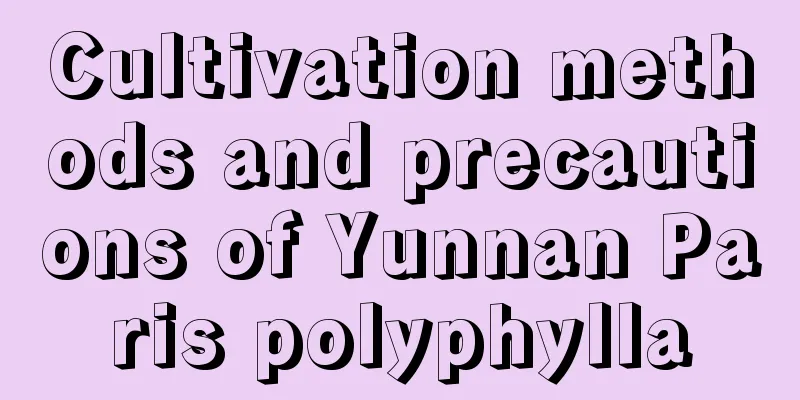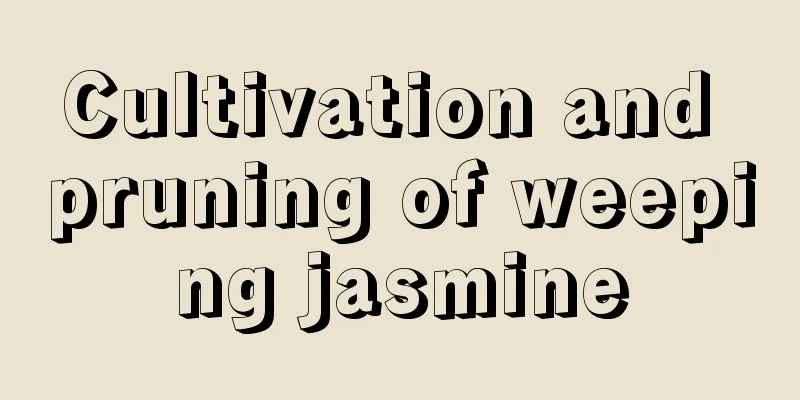Cultivation methods and precautions of Yunnan Paris polyphylla

1. SoilParis polyphylla grows well in slightly acidic humus soil or red soil with good permeability, and is not suitable for growing in heavy clay soil that is prone to waterlogging and compaction. During the breeding period, you can add some river sand, leaf mold and black mountain mud. 2. LightingIt is suitable for growing in shaded places, avoid direct sunlight, and can be planted in moist shaded areas and in weedy places. In summer, appropriate shade is needed to avoid strong light that may cause the leaves to wither. 3. TemperatureIt grows well in cool environments and is not cold-tolerant. Generally, the temperature in summer, spring and autumn is best kept at 16-23℃, and it should not be lower than 8℃ in winter. During the high temperatures in summer, shade is needed to cool down the plant, while during the low temperatures in winter, warming measures need to be taken to avoid affecting its normal growth. 4. WateringIt likes a shady and humid environment, and needs to be watered as soon as the soil is dry. Each time you water it, make sure it is watered thoroughly, and there should be no water accumulation to avoid damage to the root system. In summer, spring and autumn, water the plants every 2 days, and in winter, water them once every 4-7 days. 5. FertilizationIt likes fertilizer, and during the growth period, mainly some organic fertilizers are applied, such as decomposed farm manure, livestock manure, wood ash, etc. It is forbidden to use human feces and urine. Organic fertilizer should be composted for more than 3 months before application to ensure full decomposition. It is best to apply top dressing in mid-May and late August, once each time, and you can also apply some trace element fertilizers in combination. Fertilization can be applied by broadcasting or diluting with water. Watering is required once after application or before the rain. |
<<: Cultivation methods and precautions of silver hazel
>>: Cultivation methods and precautions of mulberry tree
Recommend
How to repot orchids: What time and soil are best for growing them?
1. Methods 1. It is best to change the pot on a s...
How to Green the Balcony
The greening layout of the balcony generally has ...
How to keep potted flowers warm in winter
1. About fertilization and watering: If you want ...
The cultivation method and precautions of water pinellia
1. Maintenance methods 1. Soil: The water pinelli...
Spring cabbage planting time and method cultivation technology and management points
Spring cabbage planting time Spring cabbage can b...
What kind of soil is best for growing Jade Plant?
Jade Plant is a very beautiful plant, its leaves ...
How to grow parsley on the balcony
Sowing time The best time to plant coriander seed...
What are the methods and precautions for growing succulent Raul?
Raul succulent is a common plant among ours. Amon...
Can Bird of Paradise be poured with beer?
Can Bird of Paradise be poured with beer water? G...
A must-see for newbies! 4 taboos of orchid cultivation, you will lose a lot if you don't know them
Don't plant small plants in large pots Some f...
Does ginger bloom?
1. Can it grow flowers? There are many types of g...
What succulents can be planted in summer?
1. White Phoenix This kind of succulent is more s...
Can thick skin be hydroponically cultivated? How to hydroponically cultivate thick skin plants
Can thick skin be hydroponically cultivated? Thic...
The meaning of yellow chrysanthemum, the meaning of chrysanthemums of various colors
1. The flower language of yellow chrysanthemum 1....
How to hydroponically cultivate aloe vera and what to pay attention to in later maintenance
1. How to hydroponically cultivate 1. Choose a co...









